Two-minute review
The Moto G Stylus 5G is not to be confused with the Moto G Stylus (2021), though it's a curious update that certainly lends itself to confusion. The Moto G Stylus 5G is borrowing a lot from the reputation of its predecessor and only changed a few things, notably adding 5G connectivity with a $100 price bump in tow — hitting $400 (about £290, AU$545) total.
This new version of the phone is still a solid mid-ranger with specs to match. It has a surprisingly capable chipset with the new Snapdragon 480, which is responsible for the 5G connectivity (albeit only Sub-6) and performs nearly as well in the Moto G Stylus 5G as the Snapdragon 678 in its predecessor. In benchmark scores, the Snapdragon 480 t even outperforms the Snapdragon 765G in the Google Pixel 5, a phone that costs considerably more.
We still see the same display in the Moto G Stylus 5G as its predecessor, but that’s not too big a surprise, as Motorola landed on a compelling 6.8-inch, 1080 x 2400 resolution, LCD panel that gets impressively bright and is sharp enough resolution for anything we might want. The phone’s screen doesn’t have a higher refresh rate than the standard 60Hz, though, so it’s lagging behind the OnePlus Nord 2, Samsung Galaxy A52 5G, and even Motorola One 5G.
Unsurprisingly, at this price point, Motorola’s sticking to some basic materials. The screen may be covered in glass, but the frame and back are plastic. That’s not to say they feel cheap or flimsy, though the single speaker at the bottom of the phone does leave the audio experience feeling cheap and flimsy. The rear-mounted fingerprint scanner is also a step backwards, as the Moto G Stylus (2021) had a side-mount scanner that worked much more easily. The phone also offers just simple water protection without an IP rating.
The cameras aren’t worth getting excited about. Though Motorola offers four cameras on the rear, and even upgrades them over the Moto G Stylus (2021) by increasing the resolution of the ultra-wide, they tend not to shoot anything that really dazzles. They’re decent, and at least the coloring is consistent between sensors, but it would have been better to improve on the main sensor and go with fewer cameras overall.
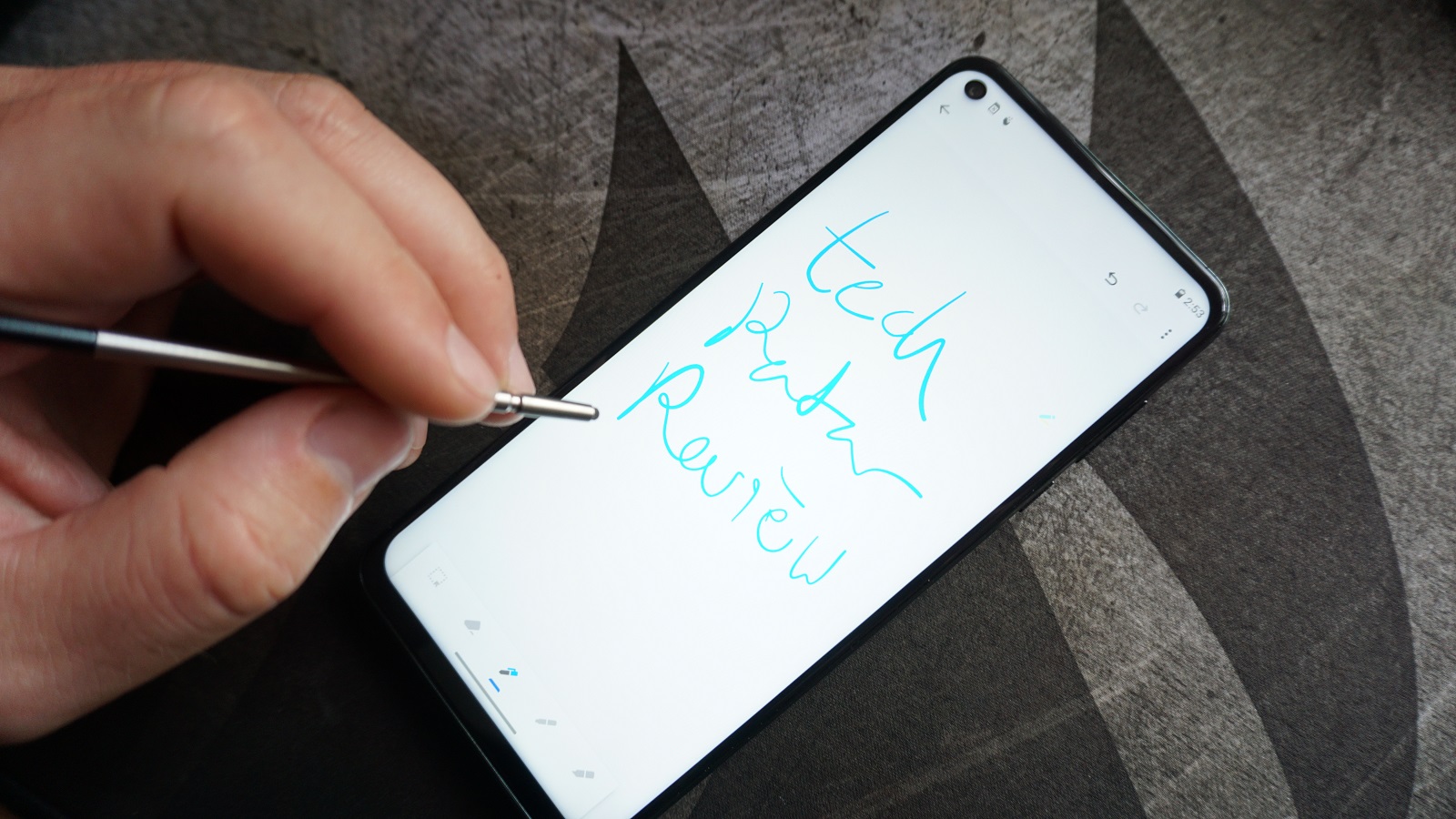
Though the Moto G Stylus 5G is reasonably well-rounded, it has a lot of competition among phones that are doing similar things. The only way it manages to stand out is with its inclusion of a stylus, positioning itself as something of an affordable Samsung Galaxy Note 20. But the Moto phone’s stylus is rather simple. It’s not as precise as an active stylus and lacks the pressure sensitivity. And, outside of the native apps, it suffers a bit from latency on top of issues with pinpoint accuracy. It may be better than a finger in some cases, but it hardly feels like it merits being built into the phone, and any other phone can use a basic stylus to catch up.
If you really crave that stylus integration, it’s a fair enough reason to opt for the Moto G Stylus 5G, but for better value we’d go ahead with the Motorola One 5G, Samsung Galaxy A52, or Pixel 5a instead. Since the phone is only on Android 11, another reasonable option would be to hunt down a refurbished Samsung Galaxy Note 20 or wait for one of the many Samsung discounts to get a premium device at a mid-range price.
Moto G Stylus 5G price and availability
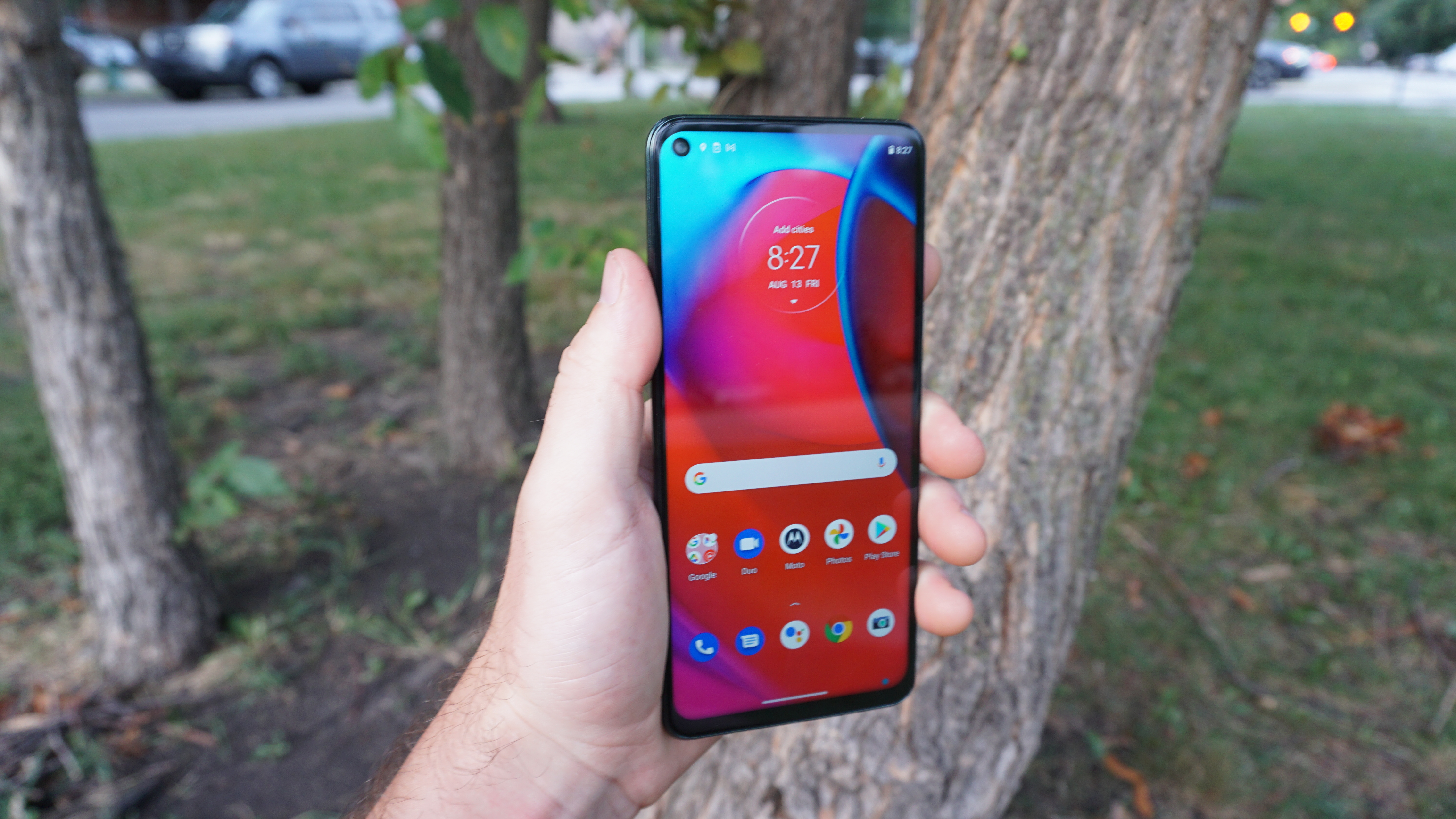
The Moto G Stylus 5G is available now in the US, but it isn't on sale in the UK or Australia. There doesn't seem to be any sign of Motorola bringing this phone to either of those territories.
The G Stylus 5G price launched at $400 (about £290, AU$545). It comes in only one retail configuration with 6GB of RAM, 256GB of storage, and a Cosmic Emerald colorway. A 128GB model with 4GB of RAM is also available from some carriers, though we haven’t heard about pricing for that version.
Design
The Moto G Stylus 5G changes little from its predecessor. It’s still a mostly-plastic affair with a glass front that hasn’t entirely done away with bezels. The screen has a punch hole selfie camera in the top left corner. Despite the plastic, the phone looks rather stunning thanks to the Cosmic Emerald color, and the frame feels sturdy.
Motorola has kept the USB-C and 3.5mm headphone jack on the bottom of the phone as well as the stylus slot and the unfortunately solo mono speaker. The power and volume buttons sit high up on the right side of the phone while the SIM card and microSD tray slot is on the left side.
Unfortunately, another one of the changes to the design is the fingerprint sensor, which feels like a regression. Where the predecessor had a side-mounted fingerprint sensor built into the power button, the Moto G Stylus 5G shifts that sensor back to the rear of the phone, where we not only have to reach to touch it but also have to do so blindly.
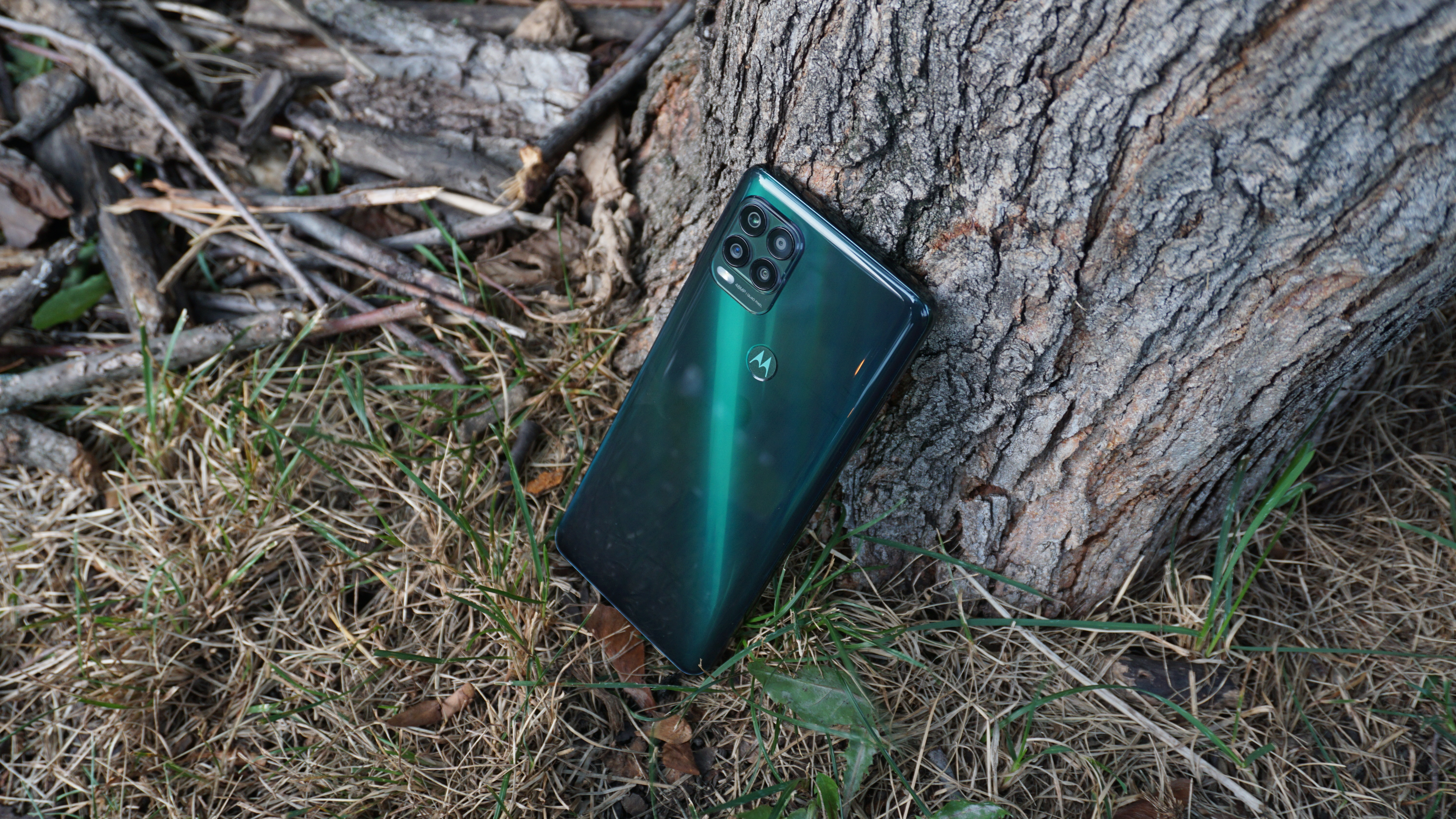
The camera bump has changed to line up with Motorola’s newer style, opting for a square array rather than a single line of cameras. There are four sensors on the rear with a flash underneath. Curiously, the mics are only on the top and bottom edges of the phone, with none facing forward with the cameras.
As with so many of Motorola's budget devices, the Moto G Stylus 5G has a water-repellant design but isn’t offering a more resilient IPX7 or IPX8 rating. This is likely to save on cost (getting an IP rating adds to the unit’s price), but also makes it less clear how water- and dust-resistant the Moto G Stylus 5G actually is.
Display
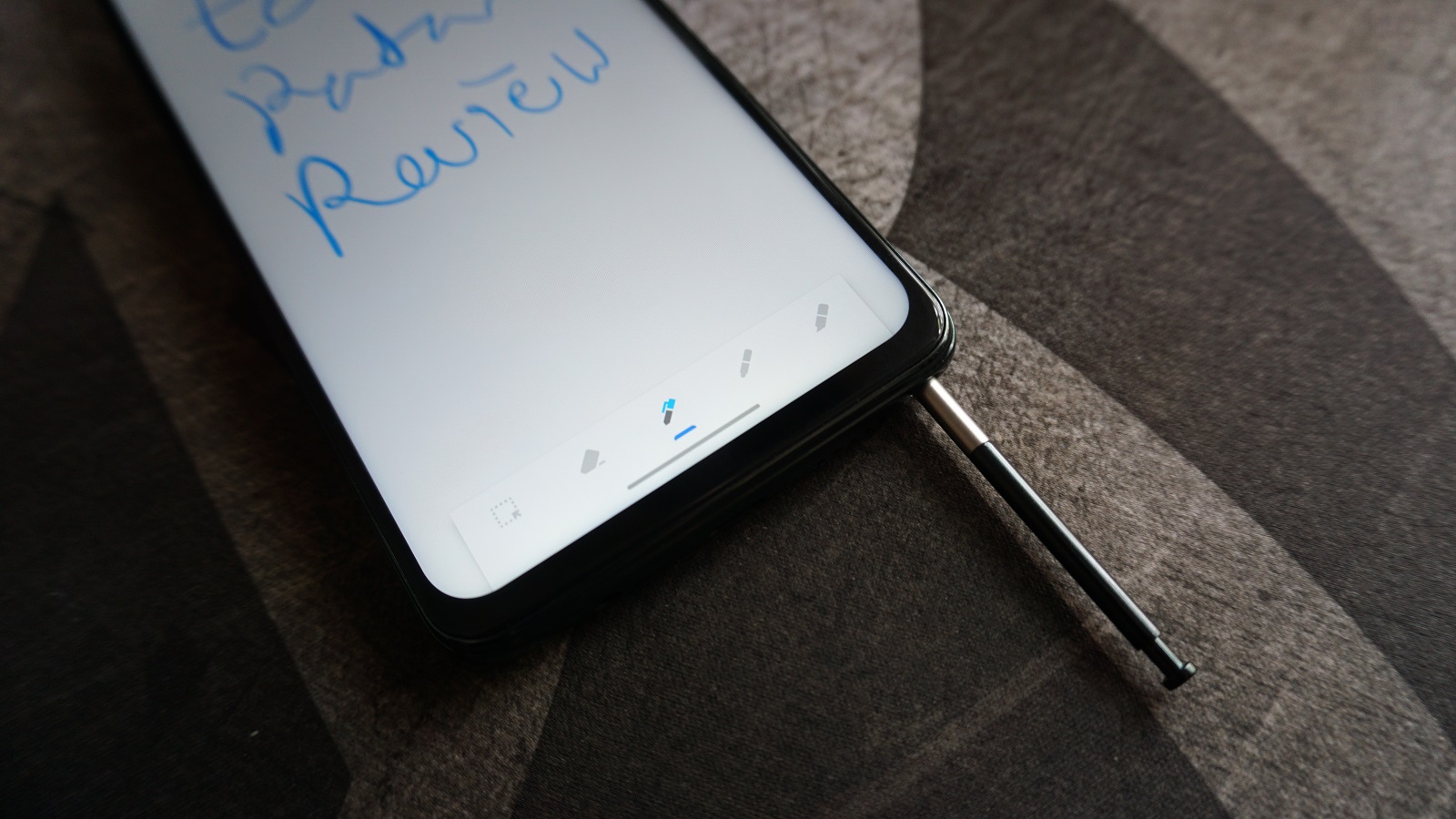
On the plus side, Motorola’s stuck with a strong display for this price point. The 6.8-inch LCD display provides tons of space for content and gets reasonably bright for most environments.
It’s perfectly sharp, so we don’t notice pixels or softness, though it’s not boasting a high refresh rate (phones are reaching 90Hz or 120Hz refresh rates these days) nor the perfect black levels of OLEDs.
The stylus isn’t as special as the name suggests, though. It’s stylish and well integrated into the phone physically, popping in and out of its dedicated slot with a pleasant click. But, it’s a basic stylus that’s just a more precise analogue for a finger, not an active stylus with a fine nib and advanced precision.
In fact, the way the Moto G Stylus 5G’s stylus registers on the screen doesn’t quite line up with where we intended to tap. It’s not completely off, and it’s way more precise than a finger, but it’s a far cry from the likes of the Galaxy Note 20’s fine S Pen (which also has Bluetooth connectivity and remote features).
Cameras
The Moto G Stylus 5G is caught up in the same mire as many of its siblings. It’s packing a bunch of cameras that fail to go beyond just being nice. The phone offers a quad-array of rear cameras with a 48MP main sensor, an 8MP ultrawide, a 5MP macro, and a 2MP depth sensor that doesn’t bring much to the party.
We mean it when we say the cameras are just ‘nice’ – they aren’t bad in good conditions. In daylight, the cameras do a good job of matching color between sensors, so the ultra-wide and main cameras can be used interchangeably without seeming to come from totally different devices. If it gets dark, though, the images get very noisy and unpleasant.
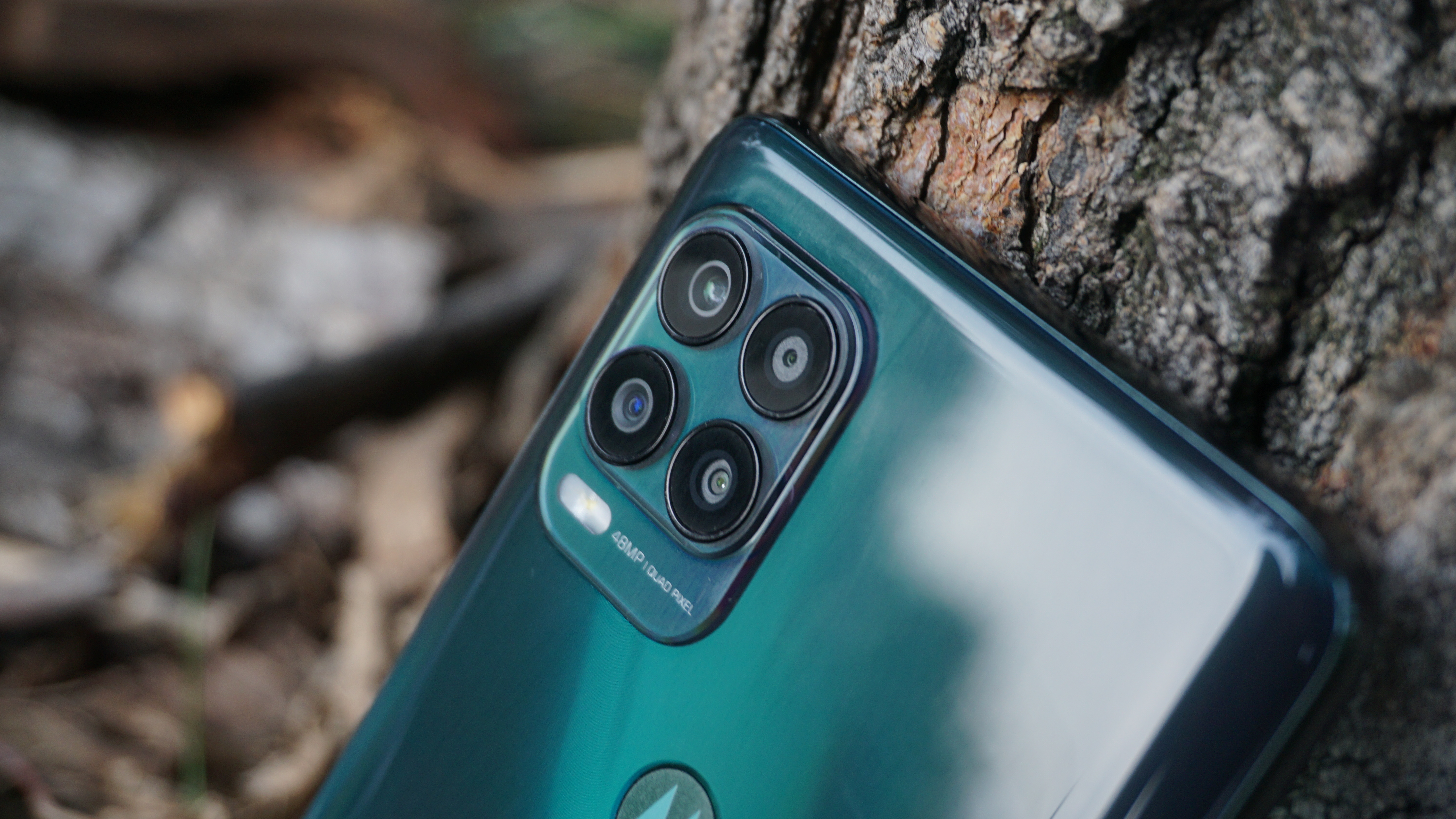
The macro camera can be a little fun, though it doesn’t feel like it gets quite as close up as some we’ve tested. Getting too close just sees the subject go completely out of focus. The selfie camera will do the job with sharp clarity and an impressive ability to keep the subject well-exposed even with intense background light.
The phone’s video is an issue. Though it can capture video just fine, the settings and controls are limited. We couldn’t even find an option to change resolution, perhaps because it can’t shoot above 1080p (the Motorola One 5G can bump up to 4K). Worse than that, the viewfinder was consistently choppy, making it hard to keep up with movement — the resulting video was smooth though.
Camera samples
















Specs, performance and battery life
The Moto G Stylus 5G comes running on a Qualcomm Snapdragon 480 chipset. That may sound like a downgrade from the Snapdragon 678 that the Moto G Stylus 2021 preceding it had packed, but the numbering in the name doesn’t tell the full story.
The Snapdragon 480 is one of the latest 5G-enabled chipsets from Qualcomm, and the first we’ve seen in the 400-series. There may have been a few sacrifices under the hood to get 5G onto an affordable chip, but the overall performance wasn’t drastically impacted.
In our Geekbench 5 tests, the Moto G Stylus 5G earned a 1612 Multi-core score. This put it just slightly behind its predecessor’s 1627, but not by much. That score was actually better than even the Google PIxel 5’s 1600 points running on a Snapdragon 765G chipset. The phone also holds up well in gaming, as it plays Call of Duty Mobile quite smoothly. The phone does get rather warm with extended use, but it may fare better on cooler days.
The Moto G Stylus 5G isn’t faster than all of its competitors, and even has to contend with Motorola’s other leaders, like the Motorola One 5G, which is a comparable phone with similar price but some higher-end features, like a 90Hz refresh rate. That phone earned an 1822 multi-core score in our testing, thoroughly outpacing the Stylus 5G.
On the plus side, all of this performance is backed by a 5,000mAh battery that can go the distance. A 90-minute local video playback test running at 50% brightness only drained the battery by 8%.
And, in regular use, we don’t see the battery draining rapidly enough for concern. Hitting a full day is easy, and two full days is attainable with light to moderate use.
Should I buy the Moto G Stylus 5G?

Buy it if…
You’ll use the stylus frequently
The stylus is well integrated into the chassis of the Moto G Stylus 5G, making it easy to get out when you need. It tucks away securely so you won’t misplace it either.
You want a big screen
The 6.8-inch display on the Moto G Stylus 5G is massive and provides plenty of space to see everything from games and movies to documents.
You can get a discount
The Moto G Stylus 5G has a lot of competition because of the price bracket it’s in, but if you’re seeing a deal or have a carrier incentive for it, it may provide better value than it would at MSRP.
Don’t buy it if…
You record a lot of video
The stutter of the video feed while trying to record video will be a frequent nuisance if you regularly use it.
You expect a stylus on par with the Galaxy Note
Samsung’s Galaxy Note smartphones used an active stylus that had pressure sensitivity and worked with a special digitizing layer. The Moto’s stylus is a far simpler tool that works just like your finger but with a little more precision.
You don’t need a stylus
There are a lot of better options available at this price point, including some from Motorola. The one thing that sets this phone apart is its stylus, so if you don’t think you need it, pick something else.
First reviewed: August 2021
from TechRadar - All the latest technology news https://ift.tt/3DlVvI3

No comments:
Post a Comment